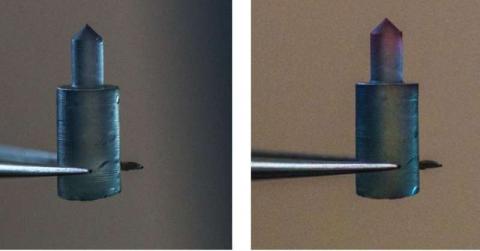Biotech breakthrough: Engineers made a new material that can be programmed

A Material You Can Teach
Engineers from Tufts University have just created a new, versatile material that could be optimized for a number of purposes, particularly within the medical field. The material was constructed out of special proteins called silk fibroins, and it can be programmed for specific biological, chemical, or mechanical tasks. The study was published online in Proceedings of the National Academy of Sciences (PNAS).
The team used water-based fabrication methods inspired by protein self-assembly to produce 3D bulk materials from silk fibroin. Fibroin, the structural protein that gives silk its durability, was chosen because it allowed for the easiest manipulation of the resulting substance’s form, as well as smoother modification of function. It’s also completely biodegradable.
The silk fibroin bulk materials were treated with water-soluble molecules at the nano-, micro-, and macro-scale to give both form and function to the target object. Simply put, the unique material is programmable. When faced with conditions like a certain temperature or exposure to certain rays, the coded task is set to activate.
(A silk fibroin pin changes color from blue to red when the force applied reaches the material’s yield point)
Work in Progress
The team created a number of objects to showcase their new material’s extraordinary potential. One was a surgical pin that changes color as it approaches its mechanical limits and is on the brink of failing. Another was a functional screw that heats up when exposed to infrared light, and they also constructed a biologically compatible structure that can facilitate the sustained release of bioactive agents like hormones or enzymes.
More research and refinement is needed before the material could be widely adapted for use, but Fiorenzo G. Omenetto, senior author and engineering professor at Tufts University, strongly believes in its potential. In an interview with Phys.org, he said, “The ability to embed functional elements in biopolymers, control their self-assembly, and modify their ultimate form creates significant opportunities for bio-inspired fabrication of high-performing multifunctional materials.”
Indeed, in addition to the proof-of-concept items the team constructed as part of their research, they believe the bulk material could be used for any number of functions, offering the examples of mechanical components that could be integrated with orthopedics to release growth factors, nuts and bolts that can relay information on environmental conditions, or even something as simple as reshapeable household items. Really, the sky’s the limit for a biodegradable material that combines the strength of silk with the programability of electronics.
- Log in to post comments
